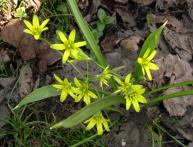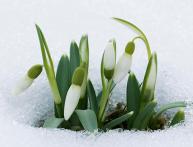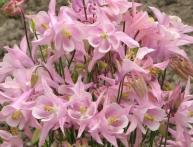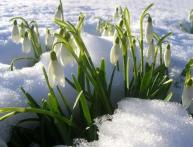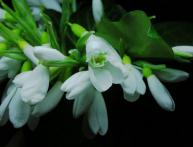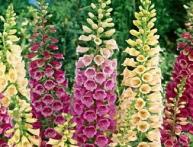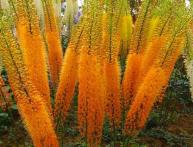Growing pelargonium at home, its beneficial properties
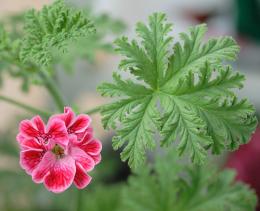
Pelargonium fragrant is often described as a geranium. You can understand why many beginners and even professional gardeners confuse these two flowers; pelargonium and geranium belong to the same family Geramiaceae, and it is very difficult to distinguish them by appearance. Their leaves are the same shape, have the same structure, they bloom in a similar way - so what's the difference?
Content:
Pelargonium fragrant
The following genera belong to the Geraniaceae family:
- Pelargonium
- Geranium
- Stork (Crane)
- Monsonia
- Sarcocaulon
It turns out that geranium and pelargonium are two different genera. They can be distinguished by the shape of their flowers; in the wild, they grow in different areas and express different resistance to cold weather.
Pelargonium fragrant - an evergreen subshrub, it has a densely branched stem, reaching a maximum height of 90 cm. At the base the stem becomes woody, then pubescent. The lower leaves are opposite, the upper leaves are alternate, the petioles are hairy.
Pelargonium is famous for its pleasant rose oil aroma, which comes from the essential oil contained in the stem and leaves of the plant. The flowers are collected in an umbrella inflorescence, the peduncles are long, each flower has 10 stamens and 1 pistil.
The corolla comes in a variety of colors, ranging from white to red.Pelargonium came to us from South Africa; they began to grow it under artificial conditions not so much for its decorative properties, but for the purpose of obtaining essential oil. The flower is unpretentious, easily propagated and takes root quickly. In warm climates, pelargonium is grown on an industrial scale.
Applications of pelargonium
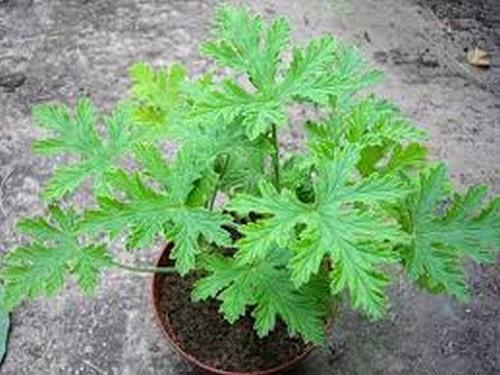
Pelargonium is an essential oil plant. Essential oil widely used in soap making, cosmetics and perfume production. Much less often, the flower is used in folk medicine and cooking. The concentrate isolated from the essential oil is even used for coloring leather products.
So, why is the essential oil of pelargonium and other geraniums so useful? First of all, it increases physical and mental performance. Helps restore emotional state, works as a sedative.
It is used for psychological and mental disorders, helps fight anxiety and fear, cope with chronic fatigue and overwork. In some ways, geranium and pelargonium oil is an antidepressant.
Plant oil helps you feel more confident, overcome inhibitions, and stop being sensitive to changes in the world around you. After a hard, stressful day, the oil helps to relax and restore a favorable aura.
Using oil in cosmetology, aims to combat rashes, flaking, inflammation and other damage, ideal for sensitive skin. Helps fight dry eczema, burns and frostbite, as it has regenerating properties.
Pelargonium helps fight parasites, so its oil is used in the treatment of fungus and lice.ENT doctors also recommend geranium oil for the treatment of diseases of the middle ear, tonsils and pharynx. The oil is great for relieving headaches and migraines. If you carry out aromatherapy for a long time, you can achieve normalization of blood pressure and the functions of the heart muscle.
The oil also has an analgesic and anti-edematous effect, lowers blood sugar levels, and helps stop the growth of tumor cells.
Growing pelargonium at home
If pelargonium appears at home, then special conditions will need to be provided for its growth and development:
- good lighting
- proper watering
- no spraying
- air temperature not lower than 12 degrees
- pinching, trimming
Pelargonium loves light and warm window sills; room temperature is suitable for the plant, but in winter it will best tolerate cool temperatures, approximately 8-10 degrees Celsius.
If there is not enough light, the plant will stop blooming or will produce very small and rare flowers, not so bright. If the plant is at home, then it is better to protect it from direct sunlight, which it will tolerate just fine when outdoors in the fresh air. Pelargonium loves space, so you should take care that it is not disturbed by other plants.
The flower should be watered when the soil dries out. If there is an excess of water, the roots can rot, which can be seen from weakened, limp leaves. In winter, the plant is rarely watered. Pelargonium easily tolerates a lack of water, so it is better to have little water than too much.
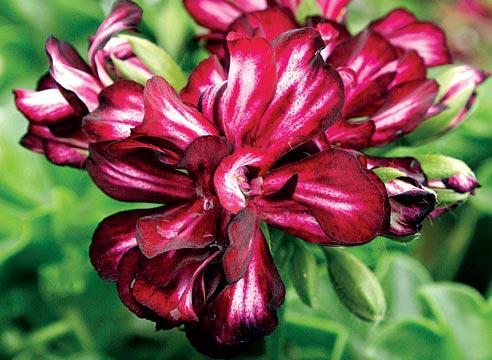
Soil for geraniums must be nutritious, when preparing it yourself, use garden soil, peat and sand.A large layer of drainage is placed at the bottom of the pot; from time to time the soil needs to be loosened to ensure oxygen access to the roots.
It is very important to choose the right pot size, it depends on the size of the root system. It will be better for geraniums if the pot is small. If the pot is spacious, the plant will not grow as actively and will not bloom so brightly and profusely.
To make the bush more luxuriant and beautiful in shape, pinching is done to remove the growing point. Pinching is done in February or March. Pelargonium must be fed. During the period of active growth, liquid mineral fertilizers must be applied; they should contain a minimum of nitrogen and a maximum of phosphorus.
Reproduction of geraniums
Pelargonium reproduces in two ways: vegetatively and by seeds. In the first case, green cuttings are used.
Green cuttings for propagation are taken from March to September. Rooting will occur within 7-14 days. If semi-lignified cuttings are taken, then the sampling period is from August to October, and rooting will last up to 3 weeks. The average cutting length is 5 cm.
Using a sharp knife you need to cut off the stalk, leaving the top 3 leaves, the rest are removed. The cuts need to be treated with charcoal or sulfur so that the cuts dry; one day in the fresh air will be enough.
Plant the petioles in plastic cups with drainage holes. This is done for a reason; transparent walls allow you to control the level of soil moisture and the appearance of roots. Coconut fiber is placed in a cup and placed in a warm fungicide solution so that the fiber becomes wet, and then we wait one day for it to dry.
The cutting must be planted deeply so that the edges reach the bottom.At first, the cutting may be sluggish, but after 3-4 days its condition will be restored. The glass should be placed away from the window, but in a bright place. Water is poured only into the tray. The plant will take root faster if the room temperature reaches 24 degrees.
Rooted cuttings can be moved into small pots and transferred to greenhouses or to the window.
It is much more difficult to grow any plant from seeds, but the attempt is not torture. Seeds are sown in containers in winter, from December to February. You can prepare the soil yourself by mixing peat with river sand; pure peat will also do. In three weeks, shoots will appear. All this time, the soil is regularly moistened. It is necessary to create a greenhouse effect, that is, cover the container with glass or film.
The sprout is transferred to a separate container when at least three leaves appear on it. When more than 6 leaves appear, the plant can be pinched so that it begins to branch.
As we can see, growing pelargonium is very simple; favorable conditions can be created for it in every home. Essential oil obtained from geranium leaves is very beneficial for all body systems.
How to choose fragrant pelargonium and how to grow it, watch the video:
Interesting information about the vegetable garden



